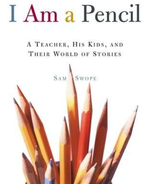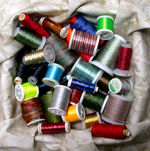Posted by Diane Morrow on January 19, 2009 in Uncategorized

A Love Song to the Teaching of Writing This memoir carries the subtitle, A Teacher, His Kids, and Their World of Stories. A decent and serviceable subtitle. But it fails to mention the love. And this book, perhaps more than anything else, is a love story. Love between a teacher and children. Love between a teacher and stories. A kind of hymn to what is possible with reading and writing and children. First, meet Mr. Swope. Here, in the first chapter, he introduces himself. I was a writer, children’s books mostly, funny stories in which anything could happen. Every morning I got up at six, fed Mike, my cat, and got to work. I spent a lot of time inside my head with giants and ogres, fairies and talking animals, and when I went out into the city, I was a danger, sometimes so lost in thought I’d cross a street against the light, only snapping to at the blare of a horn. To free my life for writing, I’d pared it down to the essentials: a small Manhattan rental, no kids, no car, not even a TV. I’m not a famous writer now and wasn’t then, nor had I published much—nothing in some time. Still, I kept going through the motions, throwing words at the computer, screen after screen of promising beginnings, bits of characters, half thoughts, every day more words; but they never added up to anything, not book had taken shape in much too long, and I had grown discouraged. Then—-something happens. He gets asked by Teachers and Writers Collaborative to give a workshop to a classroom of third-graders in Queens. He is slated to work with them for ten days. He ends up staying with them for three years, seeing them off, in the bittersweet final chapters, to middle schools scattered throughout New York. Sam Swope is the kind of magical teacher one might wish for one’s own children—or for one’s own child self. He’s passionate about stories—but not puffed up in any way. There’s something humble and honest and refreshing about him. He reads with the children. Writes with them. Walks with them—dozens of times?—to Central Park to sit beneath the trees and write. Perhaps the best way to meet Mr. Swope and his pencil book is to meet him as he teaches, this beginning in the first several paragraphs of his preface which I am typing out here because, well, I love this beginning. I love the way he invokes the mystery of Wallace Stevens’ poem with these children. So, from the preface, entitled, The Blackbird is Flying I Among twenty snowy mountains, The only moving thing Was the eye of the blackbird. First we went over some hard words—pantomime, indecipherable, Haddam, lucid, euphony, and equipage. Then, as I handed out copies of ‘Thirteen Ways of Looking at a Blackbird,’ I told the fifth graders, ‘This is a famous poem written by an American businessman named Wallace Stevens. I’m telling you so that you know you can be a writer and still have another career.’ I said, ‘Before we discuss it, I want you to read silently.’ My students put their elbows on their desks and leaned over the poem. I’d been teaching writing to this class for three years, since they...
read more


